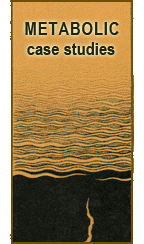Acupuncture and Herbs for Fibromyalgia and Chronic Fatigue

Chief Complaint: fibromyalgia and chronic fatigue
Western Diagnosis: fibromyalgia Jan 2001
Medical History: A 50 year old female, health care professional and PhD candidate, sought Chinese medicine for the first time on May 11, 2001, with symptoms of fibromyalgia for one and a half years prior to formal diagnosis in January 2001.
Patient’s physical activity had been limited, since exercise aggravated her symptoms. Symptoms were also aggravated by stress and inactivity. A physician prescribed Prozac, 10 mg on odd days, 20 mg on even days, Premarin 1.25 mg daily, and glucosamine chondroitin, dosage unspecified. The patient also took a daily multivitamin and calcium supplement. There was mild improvement in her condition on this regimen, but she was advised that she would “just have to live with pain.”
Medical History: allergic asthma, sinus allergies, chicken pox, fatigue, headaches, reactive hypoglycemia, measles, mumps, a left arthotomy in 1970, and left knee osteoarthritis, as well as a family history of diabetes mellitus and stroke maternally.
Patient’s intake consisted of cold or hot cereal with milk and fruit juice in the mornings; leftovers or a salad or cold sandwich for lunch; meat, starch and a vegetable for dinner. Snacks included cheese and fresh fruit, coffee or tea.
Questioning exam: Patient reported extreme fatigue (impairing her ability to work and causing her to routinely go to bed at 7 PM) and a feeling of muscle aches all over the body, like after a workout, but all the time. The pain would be more or less intense on alternating sides of the body. The patient reported feeling alternating sensations of heat and cold, skin sensitive to environmental changes in temperature, alternating constipation and diarrhea, and a tendency to spontaneous sweating. Patient reported one enlarged cervical lymph node. Patient reported a feeling of “brain fog” or clouded thinking.
Pulse exam: Floating in the left cun position; soggy in the left guan position; slightly vacuous in the left chi position. Floating in the right cun position; slightly vacuous in the left guan position; weak in the left chi position.
Tongue exam: The tongue body was of normal size and shape, slightly purple and trembling, with a shallow longitudinal crack in the Stomach region. The fur was thin, white, moist and evenly distributed. The patient’s complexion was pale and dim, with dark circles under the eyes.
OM Diagnosis: The primary pattern was vacuity of Spleen Qi, leading to accumulation of Dampness and Phlegm internally, insufficient Wei Qi, and confusion of upbearing and downbearing. Dampness had eventually become Damp painful obstruction.
Treatment Principle: Boost the Spleen Qi, drain Dampness, transform Phlegm, and promote upbearing. When pain was prominent, the principle of overcoming Dampness or Wind-Dampness was employed.
Point Prescription: Points were selected from the Du, Yangming and Taiyin channels. Du 20 was always employed to promote upbearing. Lung 7, Large Intestine 4, Spleen 9 and 6, Stomach 36 and 40 were most often employed, with the occasional inclusion of Lung 5 if knee pain was prominent or Du 24 if “brain fog” was prominent.
Herbal Formula: The ruling formula was Bu Zhong Yi Qi Tang, adding Ban Xia. Herbs such as Qiang Huo, Fang Feng, Ge Gen and Wei Ling Xian were included when pain was prominent.
Lifestyle Prescription: Patient was advised to keep a log of intake and avoid cold, raw, fermented, and dairy foods. Patient was instructed to apply indirect moxibustion to Stomach 36, three times weekly. Compliance was excellent, and the patient reported she felt this regimen was helpful to her.
Results: Pain and mental clarity were noticeably improved after one visit; after six visits, every week to every other week, all symptoms, including fatigue, were nearly gone. The pulse had become slippery and even over the three positions and the tongue had lost its purple cast. Patient continued to have periodic flare-ups of fibromyalgia and fatigue symptoms through April 2002 which she could usually ascribe to overwork or overindulgence. These were easily managed with follow-up treatments. Through journaling, patient was able to identify an interaction of five (!) foodstuffs that aggravated her symptoms. Thereafter, she avoided combining those foods in one meal and felt her condition was improved as a result. Patient is very satisified with the outcome and feels her health is at least as good as before the original onset of her fibromyalgia and chronic fatigue symptoms.
Synopsis: The case illustrates how loss of Spleen function can disrupt the Qi mechanism, and how the Qi mechanism can be leveled by means of lifting and boosting (Bu Zhong Yi Qi Tang), assisted by downbearing and transformation of turbid fluids (Ban Xia). As the sayings go, “when there is upbearing, there is downbearing,” and “without upbearing, the clear and turbid lose their places”.
 Last modified: September 8, 2009
Last modified: September 8, 2009  Tags: Acupuncture, allergies, asthma, chronic fatigue, fibromyalgia, Herbs В· Posted in: Metabolic, Neurological
Tags: Acupuncture, allergies, asthma, chronic fatigue, fibromyalgia, Herbs В· Posted in: Metabolic, Neurological
